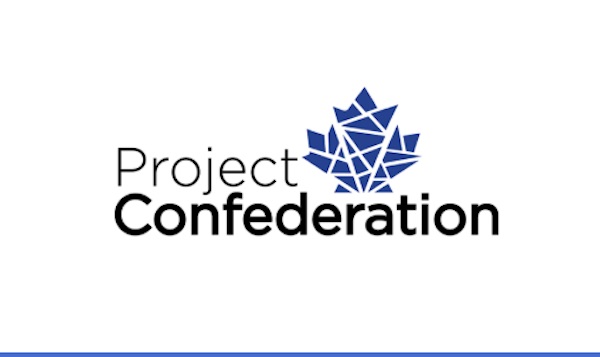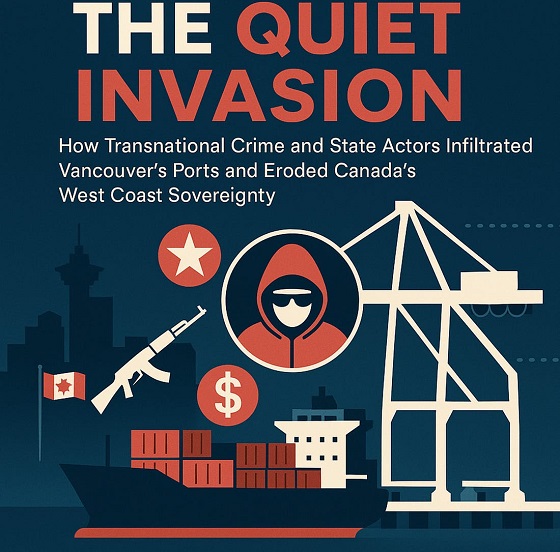Alberta
Alberta NDP have their own Just Transition plan – Project Confederation

From Josh Andrus, Executive Director of Project Confederation
Look what we discovered about the “Just Transition”…
You might remember, not so long ago, that federal Natural Resources Minister, Jonathan Wilkinson, announced that the federal Liberal government would soon be rolling out its plan for a “Just Transition.”
This is the “Just Transition” plan that the federal NDP insisted be included in the “confidence and supply agreement” that is currently propping up Justin Trudeau’s minority government.
Then, an internal government memo was made public, suggesting that hundreds of thousands of jobs will be lost in this “transition” – particularly in western Canada.
Project Confederation immediately sprung to action, investigating the proposed policies and launching a petition against the plan, which has now received more than 13,000 signatures.
(If you haven’t signed the petition yet, you can do so here)
As news spread, Alberta Premier Danielle Smith, and Saskatchewan Premier Scott Moe spoke out strongly against the plan.
But one politician was suspiciously quiet – the Alberta NDP leader, Rachel Notley.
We thought Albertans, and Canadians, deserved to know whether someone running to be Premier of Alberta supported the shutting down of Alberta and western Canada’s largest industry.
And so we pushed hard for Rachel Notley to answer the question – does she support the “Just Transition” idea?
But, as time went on, Notley’s silence became more and more deafening.
Eventually, her silence became so deafening that even some in the media began to question whether or not she truly disagreed with the plan.
Hours turned into days, and days turned into weeks – literally!
Two full weeks after Wilkinson’s announcement, Rachel Notley finally broke her silence, calling on Ottawa to “put the brakes on” the “Just Transition”.
But, “put the brakes on” sounded a lot more like “wait until after the Alberta election” than “ditch it entirely” to us.
So we decided to do some more digging.
Well, after some excellent work by our research team, we think we now know why it took so long for Rachel Notley to oppose the “Just Transition.”
It turns out that, rather than just being some federal NDP idea that she’s now distanced her provincial party from, the “Just Transition” was actually a huge part of her NDP government’s plans.
Insert flashback music here.
It’s November 2015, the newly minted NDP government are celebrating a big election win, and are moving forward with their climate change strategy.
(You know, the one they accidentally forgot to mention that they were going to implement if they won).
New Alberta Minister of Environment and Parks, Shannon Phillips, commissions a blue-ribbon report by a team of high-profile academics, to help the NDP figure out exactly how to fulfil their campaign promise (sorry, their campaign omission).
Several months later, the “Climate Leadership Report” is released, setting out the government’s vision for climate policy and – guess what?
The “Just Transition” is a key part of the NDP’s Climate Leadership Report!
Yep, that’s right – forget not knowing what the “Just Transition” is, and claiming not to support the federal government’s plan.
In reality, it was Rachel Notley’s government who wrote the policy in the first place, and then made it a critical part of their entire environmental policy agenda.
Here are some extracts from the report…
In a section discussing mitigating the impacts of carbon pricing on low- and middle-income Albertans, the NDP said they would “support a sound and just transition for labour and communities…”

Later in the report, the authors highlight a quote from their friends at the Alberta Federation of Labour.
This quote is really just one gigantic contradiction, given the government is literally legislating their employment out of existence:

Next, the report talks about what the workers who lose their jobs might need to do as part of this “transition” – it notes that they may need assistance with “relocation”:

Oh, sorry, did the government legislate away your job?
Not to worry, we’ll “fix” it for you by helping you walk away from your entire life and move somewhere else.
Remember how Rachel Notley said Albertans might have to move to BC to find work while she was Premier?
Yeah, we’d prefer Albertans could find work here in Alberta, thanks.
*****
Here’s the thing…
Not only did the Alberta NDP support the concept of a federal “Just Transition” when they were in government, they were also actively implementing their own “Just Transition” – 8 years earlier than the federal government!
And yet now they claim to not support the idea at all?
No wonder it took so long for Rachel Notley to answer the question.
She was probably just surprised that no one in the media had dug up her own support of “Just Transition” legislation from years before, and was wondering if she could get away with pretending she hadn’t.
Well, we’re not surprised no one in the media bothered looking.
But, we did look, and thank goodness we did!
Thank you to our researchers who dug up this document, which I’m sure the NDP would have preferred we’d not found.
If you’d like to help us do even more research like this, please click here to make a donation to our work.
Otherwise, if you haven’t signed the No Unjust Transition petition yet, please click here to do so now.
Rachel Notley’s claim to now be opposed to the exact thing that she herself implemented is not credible.
She can run from it, but she can’t hide.
Her environmental policies put Alberta into one of its deepest recessions ever.
And we can’t afford to repeat those mistakes.
Sincerely,
Josh Andrus
Executive Director
Project Confederation
Alberta
Alberta Provincial Police – New chief of Independent Agency Police Service

Sat Parhar has been appointed as the first chief of the Independent Agency Police Service, marking the next step toward a new municipal policing option.
The appointment of a new chief for the Independent Agency Police Service (IAPS) marks the next step in giving municipalities a new option for local policing and builds on the work already underway for the agency to assume the police-like duties currently carried out by the Alberta Sheriffs. The IAPS will empower municipalities to adopt strategies that effectively respond to their specific safety concerns, enhancing public safety across the province.
Chief Parhar brings more than 25 years of policing experience, including senior roles with the Calgary Police Service, most recently as deputy chief. His frontline policing experience and deep understanding of Alberta’s complex and diverse public safety landscape positions him to lead the agency as it takes shape and begins its work as a new municipal policing option, keeping communities safe.
Once operational, the agency will strengthen Alberta’s existing policing model and complement the province’s current police services, which includes the RCMP, Indigenous policing services and municipal police. It will help fill gaps and ensure law enforcement resources are deployed efficiently to meet Alberta’s evolving public safety needs and improve law enforcement response times, particularly in rural communities.
“Appointing Chief Sat Parhar is a key milestone in Alberta’s plan to give municipalities a real choice in how their communities are kept safe. This is about building a modern police service that reflects the priorities of Albertans, strengthens local decision-making, and ensures every corner of our province, especially rural areas, can count on responsive, effective law enforcement. With his decades of experience and deep understanding of Alberta’s policing landscape, he is the right leader to bring this vision to life.”
“This appointment signifies a significant step forward in our efforts to establish a more robust, community-focused policing model that is better equipped to meet the unique needs of our local residents. Under Chief Parhar’s visionary leadership, we are confident that we will develop a modern, efficient police service that not only enhances public safety but also aligns closely with the priorities and values of Albertans. His experience and commitment are vital in shaping an IAPS that is responsive, transparent, and dedicated to fostering trust and collaboration within the community, ultimately ensuring a safer and more connected society for all.”
Chief Parhar’s immediate priorities will be to hire an executive team and commence organizational planning such as developing key recruitment, training and other operational policies. Chief Parhar’s appointment is the first step of many to establishing the IAPS.
“It’s an honour to take on this role and help shape a modern police service built for Alberta. My focus from day one will be on setting high standards for professionalism, building strong relationships with our partners and ensuring this service reflects the needs and priorities of the communities we serve.”
The Independent Agency Police Service was formally created through regulation following the passing of Public Safety Statutes Amendment Act, 2024. The agency will operate as an independent Crown corporation, and will be renamed the Alberta Sheriffs Police Service, with its head office located in Calgary. The IAPS will be operationally independent from the provincial government with civilian oversight, consistent with all police services in Alberta.
“When it comes to policing, municipalities like ours deserve a choice – especially when the current system leaves us disadvantaged simply because of our size. We look forward to learning more about what that alternative will look like once an Alberta police agency is fully established and the options are clear. For us, this is about fairness, sustainability, and ensuring municipalities have access to policing solutions that reflect both their needs and their realities.”
Quick facts
- The regulation establishes the IAPS Provincial Corporation and its governance structure including board of directors, board of director powers, financial responsibilities and accountabilities.
Related news
- Expanding municipal police service options (April 7, 2024)
Alberta
Pierre Poilievre – Per Capita, Hardisty, Alberta Is the Most Important Little Town In Canada

From Pierre Poilievre
-

 Business1 day ago
Business1 day agoRFK Jr. says Hep B vaccine is linked to 1,135% higher autism rate
-

 Crime2 days ago
Crime2 days agoNational Health Care Fraud Takedown Results in 324 Defendants Charged in Connection with Over $14.6 Billion in Alleged Fraud
-

 Business13 hours ago
Business13 hours agoWhy it’s time to repeal the oil tanker ban on B.C.’s north coast
-

 Censorship Industrial Complex1 day ago
Censorship Industrial Complex1 day agoGlobal media alliance colluded with foreign nations to crush free speech in America: House report
-

 Alberta8 hours ago
Alberta8 hours agoAlberta Provincial Police – New chief of Independent Agency Police Service
-

 Health2 days ago
Health2 days agoRFK Jr. Unloads Disturbing Vaccine Secrets on Tucker—And Surprises Everyone on Trump
-

 Alberta13 hours ago
Alberta13 hours agoPierre Poilievre – Per Capita, Hardisty, Alberta Is the Most Important Little Town In Canada
-

 Business1 day ago
Business1 day agoElon Musk slams Trump’s ‘Big Beautiful Bill,’ calls for new political party


